–
I enjoyed compiling these images, which mirror the journey taken by the characters in The Courage Test. The only caveat I’ll add is that scrolling through the photos and reading the captions might give readers a false idea of the story. Though my focus here is on literal place, the book is not a travelogue. There’s a plot and everything. Really!
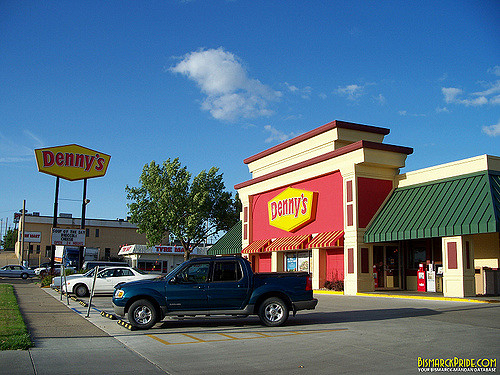
Bismarck, North Dakota, page 20: “Are they fast at Denny’s? Good question. Yes, they are fast. You say your order out loud, and literally before you reach the end of the sentence there it is, steaming hot on the table in front of you. How is that possible? No one knows.”

Page 30: At the Fort Mandan Gift Shop, Will buys a postcard and scribbles, “The soldiers on the expedition built a fort here, but it’s long gone. So the tourist board built an exact replica. Whatever! The tour guide told us it got as cold as 45 degrees below zero that winter. Brrrrr, chilly. The soldiers almost ran out of food, but fortunately the people of the Mandan tribe were super friendly. They had corn to spare! Otherwise those guys might have starved. We’d all be like, Lewis and Clark? Nope, never heard of ’em. Ha!”

Floating east on the Missouri River in the White Cliffs region. Page 48: “I am glad to be on the river, pulling a paddle through the water.”

Pages 50: “And then he lurches forward, his long, jerky strides eating up the trail in that falling-forward way of his, until we come to a plaque titled DECISION POINT.”

Page 57: “I glimpse my first sight of strange rock formations. These are called the Breaks, rocks that have been folded, faulted, uplifted, and left here, like old, dead soldiers from another, long-ago war. White sandstone cliffs begin to rise higher and higher on both sides. It feels like we’re traveling through a great stone maze built by ancient gods.”

Page 85: “That night, we camp where the Corps of Discovery camped more than two hundred years ago. Meriwether Lewis and his men. Under the same starry skies, staring into the same fire, beside the same chalky cliffs.”

Page 91, Fort Benton: “As a treat, he decides to spring for the swanky Grand Union Hotel in the heart of downtown. It’s a beautiful old brick building near the river. I am grateful to have a television and a big, soft bed with sheets and pillows. A working toilet isn’t half bad, either.”
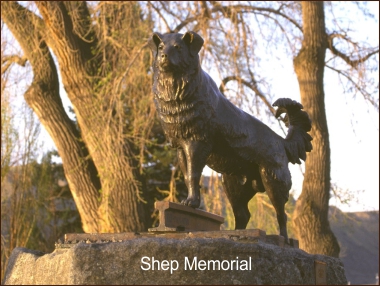
Park in Fort Benton, near Grand Union Hotel. Page 96, Will writes another postcard: “This is a statue of Shep, an important dog in the town of Fort Benton. They say that Shep hung out at the train station every day for five years waiting for his master to return. Unfortunately, his master was dead, but Shep made it into Ripley’s Believe It or Not! Worst of all, Shep died when he got hit by a train. True fact! Old, weird America.”

Dillon, Montana. Page 112: “I can see my father watching me through the Dairy Queen window. His expression is curious, alert. He’s seated across from Maria Rosa, who is biting into an enormous burger.”
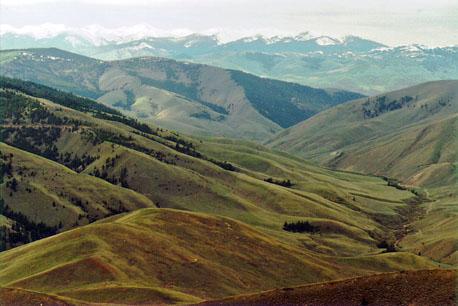
Lemhi Pass area, page 123: “My father says, ‘Lewis stood somewhere close to this spot. He looked at those mountains — remember, no white American had actually seen the Rockies up close before — and he knew without a doubt that unless they had horses to help carry their load, they’d all die, wandering in that maze of bare rock and stone. To make matters worse, he’s trying to find a tribe, the Shoshones, who prefer to stay hidden.”
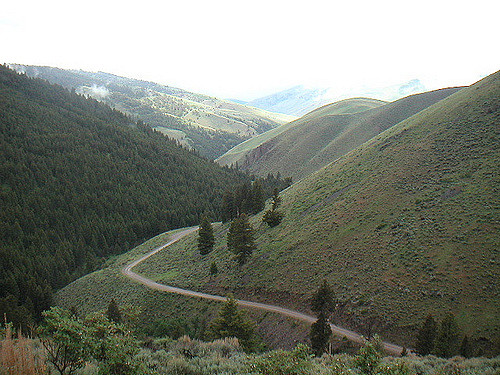
Page 125: “We return to the car and roll down a semi-terrifying, one-lane road — narrow and steep, with wicked, sharp turns — and we find an old campsite off Agency Creek Road.”

The Lolo Trail in the Bitterroot Mountains, page 134: “The next few days should be tough. This will be my first time doing true backcountry hiking. There are no stores, no cozy hotels. We are carrying everything on our backs — food, sleeping bag, tent, clothes, and, oh yes, bear spray.”

Page 150: “A bear cub is the worst possible thing anyone can find on a remote mountain trail. There’s movement in the thicket up ahead. Something big coming through, branches snapping under the weight. A black nose pokes through. Followed by the massive head and shoulders of the wildest, most dangerous beast I’ve ever seen.”

Page 158, Idaho, Highway 12: “My father puts on the blinker when we come to a big red sign that reads, THREE RIVERS MOTEL: COCKTAILS, WI-FI, POOL.” [Note: I took a little creative license here.]
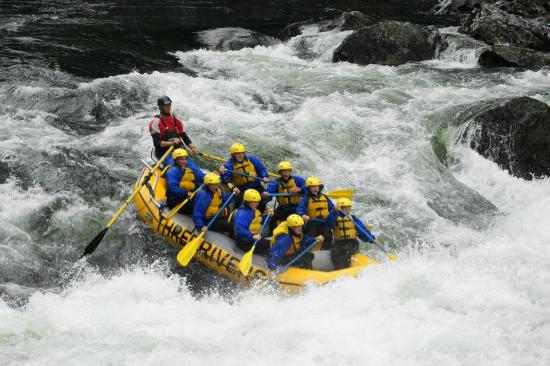
Page 179: “The first hour is probably the most exciting sixty minutes I’ve had in my entire life. And then with a lurch the boat suddenly tips down, and there’s a bounce and a jostle, and Dan cries out, ‘Big bump! Lean in!’ Before I can react, I’m popped backward into the air like a rag doll.”
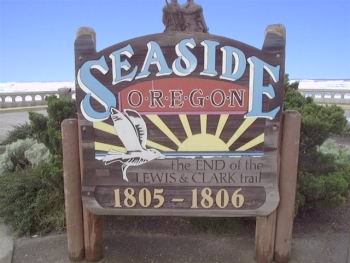
Page 184: “Seaside is a beach town, with a long boardwalk, high buildings off the shore, and a stunning sand beach.”
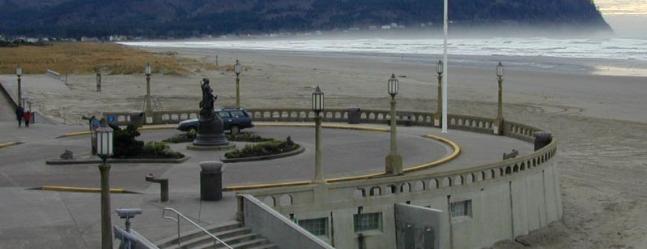
Page 187-188: “At the instant my first step reaches the water, I feel a bolt of ice-cold surge up my body. But I’m moving too fast; there’s no turning back now. And then I’m laughing — we’re both howling and screaming and yelping in shock and surprise — splashing and shivering.”
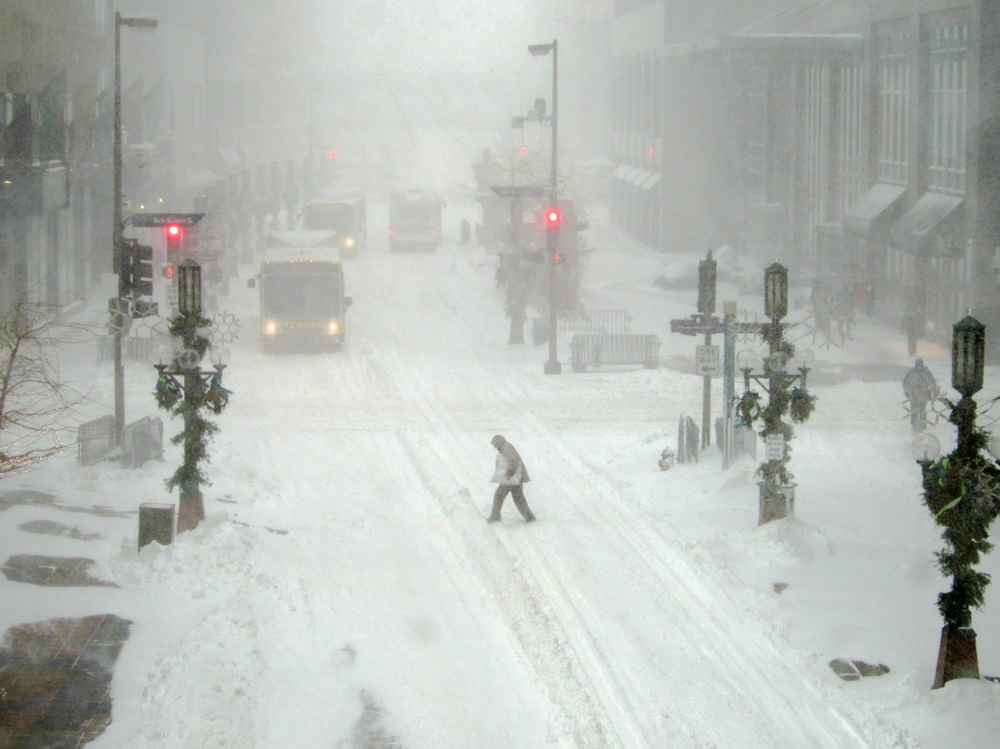
Page 203: “Time passes. Autumn comes and goes, now winter lingers. We don’t mess around when it comes to winter here in Minneapolis, Minnesota.”
The Courage Test is a 2016 JUNIOR LIBRARY GUILD SELECTION.
“A middle grade winner to hand to fans of history, adventure, and family drama..” — School Library Journal.
 “Preller traverses both domestic drama and adventure story with equally sure footing, delivering the thrills of a whitewater rafting accident and a mama bear encounter, and shifting effortlessly to the revelation of Mom’s illness and the now urgent rapprochement between Dad and Will. Whatever young explorers look for on their literary road trips, they’ll find it here. — The Bulletin of the Center for Children’s Books.
“Preller traverses both domestic drama and adventure story with equally sure footing, delivering the thrills of a whitewater rafting accident and a mama bear encounter, and shifting effortlessly to the revelation of Mom’s illness and the now urgent rapprochement between Dad and Will. Whatever young explorers look for on their literary road trips, they’ll find it here. — The Bulletin of the Center for Children’s Books.
“Preller stirs doses of American history into a first-rate road trip that does traditional double-duty as plot device and coming-of-age metaphor. . . . Also, along with helping a young runaway find a new home, Will survives a meeting with a bear and a spill into dangerous rapids — tests of courage that will help him weather the bad news that awaits him at home.”—Booklist, Starred Review






























